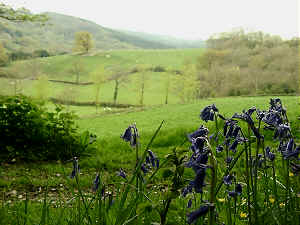 |
Structural diversity in a woodland
will be enhanced by having varied age classes of trees. Rotational felling is one way to
encourage the development of different stages of tree regeneration throughout a wood. Old trees in particular, are extremely valuable wildlife habitats. The more old trees there are in a woodland, generally the greater its biodiversity will be. Provided old trees do not become unsafe, they should be left to age and die standing as far as possible. Dead vertical timber is an important habitat in its own right for a range of species (more). |
| . | |
 |
Promoting a variety of different
tree species will also improve structural diversity within the woodland. Different trees
have different growth habits, sizes, branching shapes and physical properties. The bark
and wood of different types of trees will have varying physical properties and
construction. This has significant effects on the type and variety of microhabitats
provided by the tree for animals, plants and fungi to colonize. To illustrate this, different tree species differ in the natural acidity of their bark. Lichens in particular are affected by the acidity of the substrate they are colonizing. Therefore different types of trees will often support different lichens. Of course, it is not only tree species which provide such examples of structural diversity. All of the other plants contained within a woodland will also offer differences in structure and construction which will in turn affect the type and variety of microhabitats present. |
| . | |
 |
The edges of woodlands are
important transition zones between one type of habitat and another. These transition zones
often have a higher biodiversity because of the mingling of two different habitat types.
These days, habitats often come to an abrupt halt as one type of human dominated landscape
meets another (left). The more the edges of woodlands can be encouraged to be a real transition
zone, passing from trees through shrubs out to open areas of grasses and herbs, rather
than stopping dead with the trees, the more benefit there will be for wildlife. Many species favour woodland edges. The relative amount of woodland edge can be increased by having blocks of woodland which have an irregular outline. |